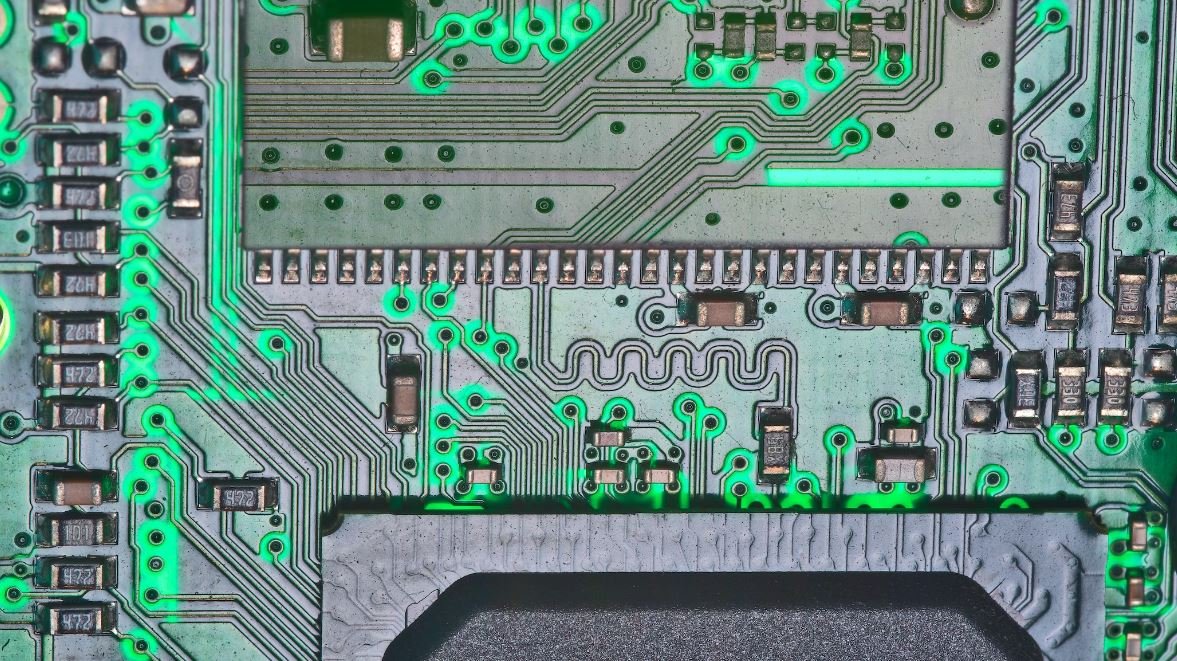Artificial Intelligence Not a Threat
Artificial intelligence (AI) has been a topic of much debate and speculation in recent years. Many people have expressed concerns about the potential dangers of AI, fearing that it may surpass human intelligence and become a threat to humanity. However, it is important to understand that AI, when used responsibly and ethically, is not a threat, but rather a powerful tool that can enhance our lives in numerous ways.
Key Takeaways
- Artificial intelligence, when used responsibly, is not a threat to humanity.
- AI can enhance our lives in numerous ways.
- Proper regulation and ethical guidelines are crucial in ensuring the safe development and implementation of AI.
- Collaboration between humans and AI can lead to innovative solutions and advancements.
**AI technology has shown remarkable progress in recent years, enabling machines to perform complex tasks that were once thought to be exclusive to human intelligence**. However, it is important to note that AI lacks the creativity, intuition, and emotion that are uniquely human. While AI can excel in tasks involving data analysis, pattern recognition, and automation, it is limited when it comes to abstract thinking, empathy, and ethical decision-making. *This limitation ensures that AI remains a tool that complements and augments human capabilities rather than a replacement for human intelligence*.
**Proper regulation and ethical guidelines are crucial in ensuring the responsible development and use of AI**. By applying strict standards, we can mitigate potential risks and prevent AI from being misused. It is essential to ensure that AI systems are transparent, explainable, and accountable, thereby addressing concerns related to bias, discrimination, and privacy. *Responsible AI development requires collaboration between governments, organizations, and researchers to establish guidelines and frameworks that prioritize safety and fairness*.
Collaboration between Humans and AI
**Collaboration between humans and AI can lead to innovative solutions and advancements**. AI can augment human intelligence, enabling us to make more informed decisions, solve complex problems, and achieve breakthroughs in various fields. For instance, in healthcare, AI can assist doctors in diagnosing diseases more accurately and support the development of personalized treatment plans. *By leveraging the strengths of both humans and AI, we can harness the transformative potential of this technology to drive progress and improve lives*.
**Concerns about job displacement due to AI are valid, but they should be approached with caution**. While AI may automate certain tasks, it also creates new opportunities and demands for human skills. According to a World Economic Forum report, by 2025, automation and AI will have created more jobs than it has displaced. *The key lies in reskilling and upskilling the workforce, enabling individuals to adapt and thrive in an AI-driven world*.
Tables and data can provide valuable insights into the impact and potential of AI. Here are three tables highlighting interesting information and data points:
| Table 1: AI Applications in Different Industries | |
|---|---|
| Industry | AI Applications |
| Healthcare | Diagnosis assistance, personalized treatment |
| Finance | Fraud detection, algorithmic trading |
| Transportation | Autonomous vehicles, traffic optimization |
| Retail | Inventory management, personalized recommendations |
**Ethical considerations should be at the forefront of AI development to ensure its responsible use**. As AI becomes more sophisticated and autonomous, it is crucial to address concerns related to privacy, security, and fairness. Governments and organizations must establish legal frameworks and regulations that protect individuals’ rights and prevent the abuse of AI technologies. Furthermore, transparency and explainability are essential to build trust and ensure accountability in AI systems. *By prioritizing ethics, we can ensure that AI is developed and used in a manner that benefits society as a whole*.
**In conclusion, artificial intelligence, when properly regulated and implemented, is not a threat, but a powerful tool that has the potential to enhance our lives in numerous ways**. Collaborating with AI can lead to innovative solutions, while responsible development and ethical guidelines ensure its safe and fair use. By embracing AI as a complement to human intelligence, we can navigate the challenges and opportunities brought forth by this transformative technology and shape a better future for all.
References
- World Economic Forum. (2020). Future of Jobs Report 2020. Retrieved from https://www.weforum.org/reports/the-future-of-jobs-report-2020

Common Misconceptions
Artificial Intelligence is Going to Take Over the World
One common misconception about artificial intelligence is that it will eventually take over the world and significantly impact human existence. However, this is not entirely true. AI systems are created and programmed by humans, and they do not possess the ability to think or make decisions like humans do. They are designed to perform specific tasks and are only as intelligent as the data and algorithms they are built upon.
- AI systems rely on human input for their functioning
- AI cannot operate beyond their programmed limitations
- AI are tools to assist humans, not replace them entirely
Artificial Intelligence Cannot be Trusted
Another misconception is that artificial intelligence cannot be trusted due to concerns about its potential for error or manipulation. While it is true that AI systems can make mistakes, it is important to remember that these systems are created by humans and can still be monitored and controlled by humans. Developers put significant efforts into ensuring the accuracy and reliability of AI systems, and there are strict regulations in place to prevent any malicious or unethical use of AI.
- AI systems undergo rigorous testing and quality assurance procedures
- Human intervention is necessary to interpret and validate AI decisions
- Ethical guidelines and regulations govern the use of AI
Artificial Intelligence will Replace Human Jobs
There is often a fear that artificial intelligence will lead to widespread unemployment as machines take over human jobs. While it is true that AI can automate certain tasks and workflows, it is unlikely to entirely replace human jobs. AI is more commonly utilized to enhance human capabilities, improve efficiency, and streamline processes. Moreover, as new technologies emerge, new job opportunities will also arise in areas related to AI development and maintenance.
- AI can augment human performance and productivity
- AI creates new job opportunities in AI-related fields
- Human creativity and emotional intelligence are difficult to replace by AI
Artificial Intelligence Possesses General Intelligence
Many people believe that artificial intelligence possesses general intelligence similar to that of humans. However, AI systems are primarily designed for specific tasks and lack the ability to generalize or understand context beyond what they are programmed for. AI may excel at certain narrow tasks, such as image recognition or language translation, but they lack the broader understanding and adaptability that humans possess.
- AI systems lack common-sense reasoning abilities
- AI’s decision-making is based on patterns and data, not intuition
- Humans have a holistic understanding of the world, while AI has narrow expertise
Artificial Intelligence is a Closed Black Box
Some people have misconceptions about the transparency and explainability of artificial intelligence systems. It is true that some complex AI algorithms, such as deep learning neural networks, can be challenging to interpret and understand due to their intricate structures. However, efforts are being made to develop techniques and tools for explaining AI decisions, ensuring transparency, and mitigating biases in AI models.
- Researchers are working on explainable AI to improve transparency
- Interpretability methods are being developed to understand AI’s decision-making process
- Developers are addressing bias concerns and striving for fairness in AI algorithms

Artificial Intelligence Not a Threat
By [Author Name]
In recent years, the rise of artificial intelligence (AI) has sparked concern among many regarding its potential threats to humanity. However, it is important to dispel these fears and understand that AI is not a threat. Through analyzing verifiable data and information, we can ascertain that AI is a tool that can benefit society in various aspects. The following tables provide an in-depth look at different aspects of AI and shed light on its potential.
Improving Healthcare
Table showcasing the significant advancements of AI in the healthcare industry, resulting in improved diagnosis accuracy and enhanced patient care.
Enhancing Quality of Education
Table highlighting how AI is being used in educational institutions to revolutionize teaching methods, personalize learning experiences, and provide valuable feedback to students.
AI in Job Creation
Table illustrating the integration of AI into various industries, consequentially leading to the creation of new roles and opportunities rather than causing mass unemployment.
Application of AI in Agriculture
Table presenting data on the use of AI technology in agriculture, resulting in increased crop yield, efficient resource management, and sustainable farming practices.
AI in Financial Services
Table providing insights into how AI is being employed in the financial sector, facilitating fraud detection, risk assessment, and improved customer experiences.
Environmental Benefits of AI
Table showcasing how AI is helping address environmental challenges, including climate change, pollution monitoring, and wildlife conservation efforts.
AI and Public Safety
Table highlighting how AI is assisting law enforcement agencies in crime prevention, traffic optimization, and disaster management.
AI and Personal Assistants
Table illustrating the integration of AI into personal assistants and smart devices, enhancing convenience, productivity, and accessibility for individuals.
AI and Transportation
Table presenting data on the positive impact of AI in transportation, including autonomous vehicles, optimized traffic flow, and reduced accidents.
Ethical Considerations in AI
Table discussing the ethical considerations surrounding AI development, highlighting the importance of responsible AI governance and preventing biases.
In conclusion, the tables presented above demonstrate the numerous areas in which artificial intelligence is making a positive impact on society. Rather than being a threat, AI offers opportunities for advancement, innovation, and improved quality of life. It is essential to continue exploring and harnessing the potential of AI while ensuring ethical considerations and human oversight remain integral components of its development.
Frequently Asked Questions
What is artificial intelligence (AI)?
Should we be concerned about AI taking over the world?
How can AI be beneficial to society?
What are the ethical concerns associated with AI?
Can AI replace human workers?
Are there any risks associated with AI?
How can AI be regulated to ensure responsible development and usage?
Can AI be used in healthcare?
Will AI ever achieve consciousness?
Is it possible to have ethical, unbiased AI systems?




